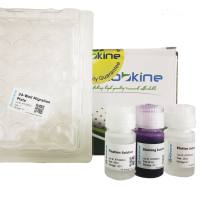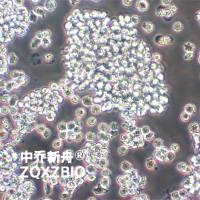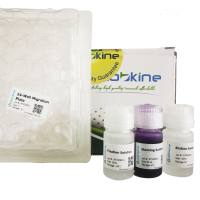染色体免疫共沉淀法(ChIP)分析细胞和组织中未固定染色体中组
互联网
- 相关专题
Chromatin Immunoprecipitation (ChIP ) on Unfixed Chromatin from Cells and Tissues to Analyze Histone Modifications
Alexandre Wagschal, Katia Delaval , Maëlle Pannetier , Philippe Arnaud , and Robert Feil1
Institute of Molecular Genetics, CNRS and University of Montpellier, 34293 Montpellier, France
1Corresponding author (robert.feil@igmm.cnrs.fr )
INTRODUCTION
In cells and tissues, the histone proteins that constitute the nucleosomes can present multiple post-translational modifications, such as lysine acetylation, lysine and arginine methylation, serine phosphorylation, and lysine ubiquitination. On their own, or in combination, these covalent modifications on the core histones are thought to play essential roles in chromatin organization and gene expression in eukaryotes. Importantly, patterns of histone modifications may be somatically conserved and can, thereby, maintain locus-specific repression/activity in defined lineages, or throughout development. Indirect immunofluorescence studies on cultured cells have been pivotal in unraveling the roles of histone modifications. However, to address in detail what happens at specific sites in vivo, chromatin immunoprecipitation (ChIP ) is the method of choice. Here, we describe how ChIP can be performed on non-fixed chromatin from animal cells or tissues (fresh or frozen) to analyze histone modifications at specific chromosomal sites. These protocols are suitable only for analyzing histones and their modifications. For other applications, chromatin immunoprecipitation should be performed on cross-linked chromatin.
RELATED INFORMATION
This ChIP protocol was derived from methodologies originally described by O’Neill and Turner (1995). It was published earlier on the Web site of the European Network of Excellence "EPIGENOME" (www.epigenome-noe.net ), and was adapted from Umlauf et al. (2003). An overview of the procedure is provided in Figure 1 . Following ChIP , we use different PCR-based methods that allow one to analyze a locus of interest in the precipitated chromatin.

View larger version (16K):Figure 1. Flowchart of the procedures used to investigate site-specific covalent modifications (i.e., methylation and acetylation) on histones. In summary, nuclei are purified from fresh/frozen tissues or from cells, and the chromatin, after fractionation with micrococcal nuclease (MNase), is purified from the nuclei. This "input chromatin," made up of fragments of up to seven nucleosomes in length, is incubated with an antiserum directed against the histone modification of interest. The antibody-bound fraction is separated from the unbound fraction and, after extraction of genomic DNA from the bound and unbound fractions, PCR technologies are applied to specifically analyze the gene or chromosomal region of interest. Precipitated DNAs can be used as probes to hybridize DNA tiling arrays (ChIP on chip) as well.









